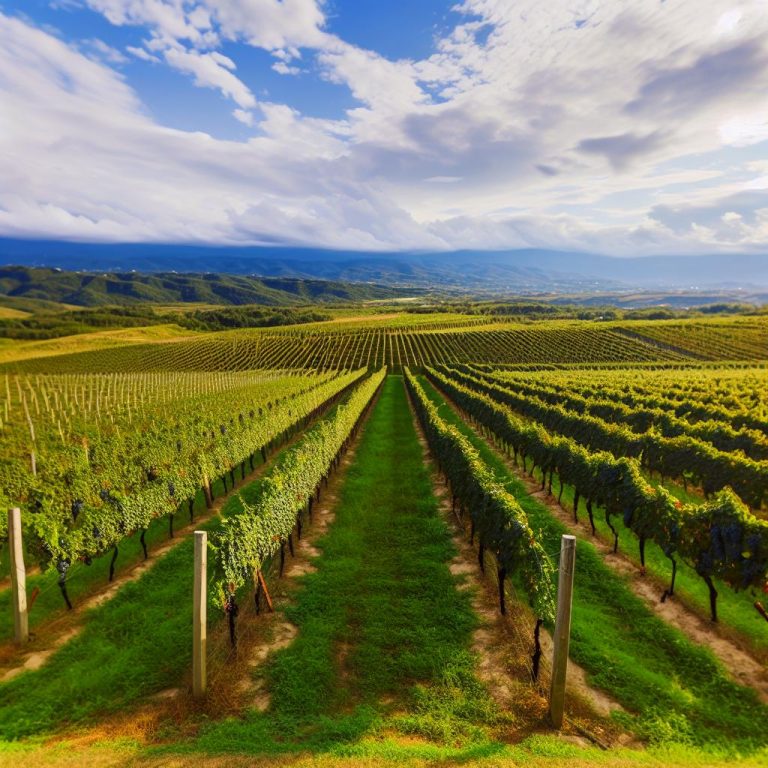Investment Overview
Georgian winemaking is an ancient tradition with roots tracing back to 6000 BC, characterized by its unique methods and rich cultural heritage. This article explores the initiative to invest in Georgian winemaking on Corn Island, Nicaragua, a location primarily known for its scenic beauty and tourism potential rather than viticulture.
Georgian Winemaking Technique
The traditional Georgian winemaking technique involves the use of qvevri, which are large earthenware vessels for fermenting, storing, and aging wine. This method, recognized by UNESCO as an Intangible Cultural Heritage, serves as the cornerstone of Georgia’s reputation in the global wine industry. By adopting this technique, investors on Corn Island aim to introduce a distinctive winemaking process that aligns with the island’s unique environmental conditions.
The Rationale for Corn Island
Selecting Corn Island for this venture incorporates both strategic and environmental considerations. The island’s tropical climate, fertile volcanic soil, and growing tourism industry offer a promising foundation for a novel and appealing winemaking practice. As Georgia seeks to expand its cultural influence globally, Corn Island provides an ideal platform to reach new markets in the Americas. Further insights into Corn Island’s geographical features can be explored through detailed descriptions available online.
Potential Challenges
While the potential benefits are evident, several challenges accompany the introduction of Georgian winemaking practices on Corn Island. Understanding these challenges is crucial for potential investors and stakeholders, as it helps navigate the complexities involved in such an international agricultural endeavor.
Climatic Differences: The climatic conditions on Corn Island differ significantly from those in Georgia. The tropical weather poses a challenge to replicating the ideal conditions needed for the cultivation of Georgian grape varieties. This difference could necessitate innovative approaches to grape cultivation. For instance, researchers and viticulturists might need to explore genetic adaptations of existing grapevines or develop hybrids that can thrive in the tropical climate.
Infrastructure Development: Establishing a successful winemaking facility involves more than just planting vineyards. It requires comprehensive infrastructure development, including the production of qvevri, storage facilities, and distribution channels. This development is a capital-intensive aspect of the venture, requiring meticulous environmental and economic planning to ensure sustainability and profitability.
Cultural Integration: Introducing a foreign winemaking technique to Corn Island requires careful consideration of cultural dynamics. The venture’s success depends significantly on the acceptance and involvement of the local population. Efforts to harmonize Georgian winemaking with Nicaraguan cultural practices are necessary. For instance, there may be opportunities to integrate local folklore, artistry, and customs with the winemaking process, creating a unique cultural fusion that enhances tourism appeal.
Economic and Social Impact
The introduction of Georgian winemaking practices on Corn Island has the potential to create substantial economic and social impacts.
The establishment of vineyards and winemaking facilities is expected to generate a significant number of jobs. These jobs will not only be in agriculture but also in related sectors such as hospitality and tourism, contributing to economic diversification on the island.
Additionally, training programs aimed at empowering the local workforce with skills in viniculture and marketing can greatly enhance employment prospects and knowledge transfer. These programs could be designed to cover various aspects of winemaking, from grape cultivation to wine tasting and sales, providing local residents with a comprehensive understanding of the industry.
Socio-culturally, this initiative offers a platform for cross-cultural exchange between Georgia and Nicaragua. Such an exchange can lead to a richer, more diverse cultural fabric on Corn Island, fostering greater understanding and collaboration between the two regions. During cultural events and festivals, for instance, Georgian and Nicaraguan music, dance, and culinary arts can be showcased, enriching the cultural landscape of the island.
Future Prospects
Looking beyond the initial stages of the project, the investment in Georgian winemaking on Corn Island holds promising potential for setting a precedent for similar initiatives globally.
The endeavor goes beyond the mere introduction of a new product; it signifies the blending of traditions and the creation of innovative economic opportunities. As interest from investors and stakeholders continues to grow, it becomes imperative to monitor the project’s progress. Such monitoring can provide valuable insights and data that inform future strategic investments in the region.
Moreover, success on Corn Island could inspire similar projects in other regions with comparable climates and environmental conditions. As global interest in diverse and unique wine varieties grows, regions that previously had no winemaking tradition might emerge as new hubs of viniculture, enriching the global wine landscape.
This exploration of Georgian winemaking on Corn Island exemplifies the possibilities that arise from cultural and economic collaborations across borders. With careful planning, adequate resources, and a commitment to sustainability, such initiatives can lead to prosperous outcomes for all parties involved.
For those interested in further reading on the economic impacts of such investments, additional resources can be found at Investment Watch. Here, one can explore comprehensive analyses and case studies that provide a deeper understanding of the potential benefits and challenges associated with investing in international agricultural projects.
